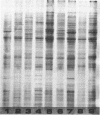Abstract
Two strains of gliding, orange-pigmented bacteria, isolated from fresh bell pepper and watermelon, respectively, showing soft-rot lesions, were identified as Cytophaga johnsonae. They differed from seven type strains of C. johnsonae deposited at the American Type Culture Collection (ATCC) in some properties, such as the ability to utilize glucose, xylose, trehalose, rhamnose, and sucrose. Spherical bodies resembling microcysts of Sporocytophaga sp. in addition to short rods and long filaments were observed in two strains (ATCC 29583 and 29588) throughout the growth cycle and also in aged cultures of other strains. All strains examined were shown to degrade five natural or synthetic polymers (pectin, chitin, starch, protein, and carboxymethyl cellulose). Only six strains (including ATCC 17061, 29587, 29589, and 19366) were able to infect and macerate artificially wounded potato tubers and fruits of pepper, squash, and tomato. The pathogenic strains secreted more pectate lyase in broth medium than the nonpathogenic strains. C. johnsonae, generally known as a soil saprophyte, might occasionally act as an opportunistic pathogen, causing decay of fresh produce in storage or in transit.
Full text
PDF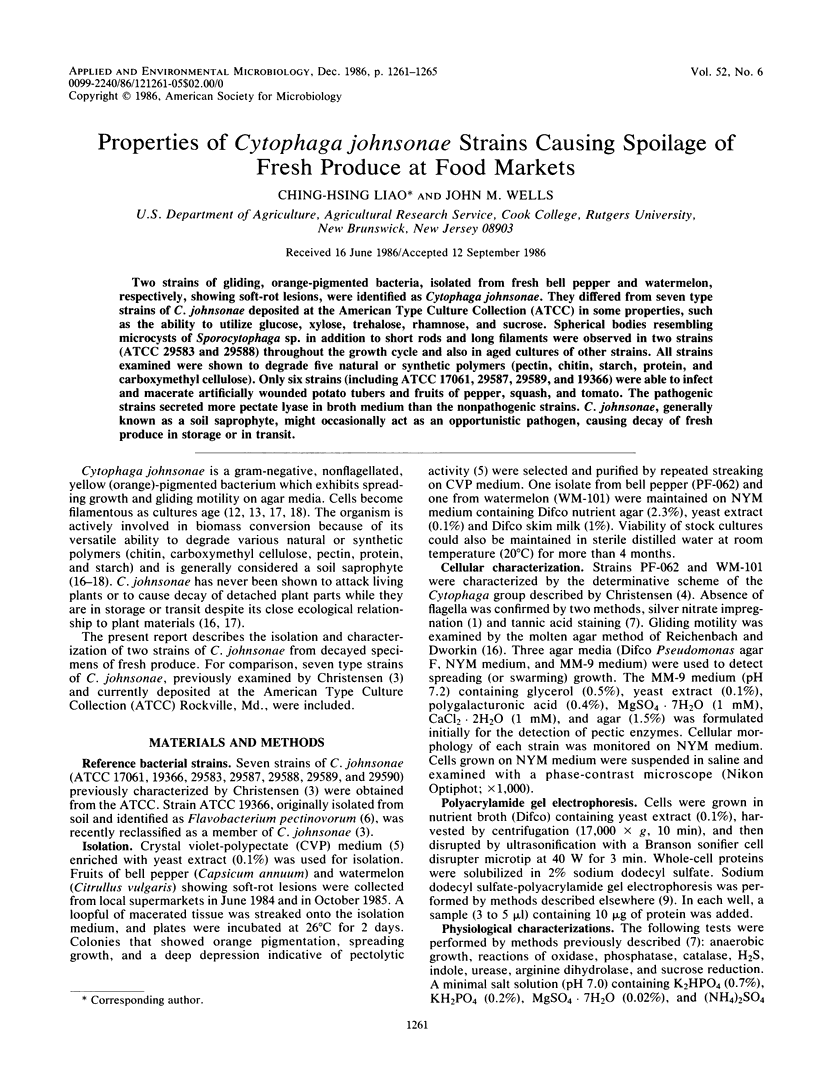
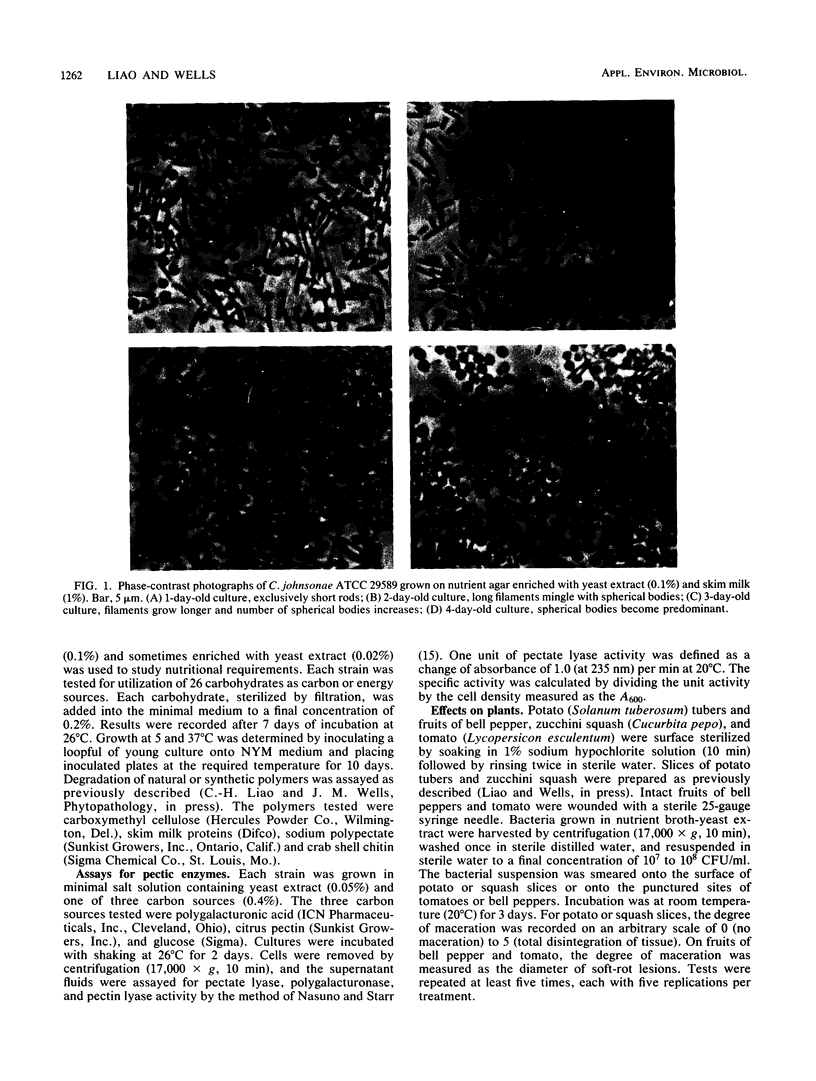
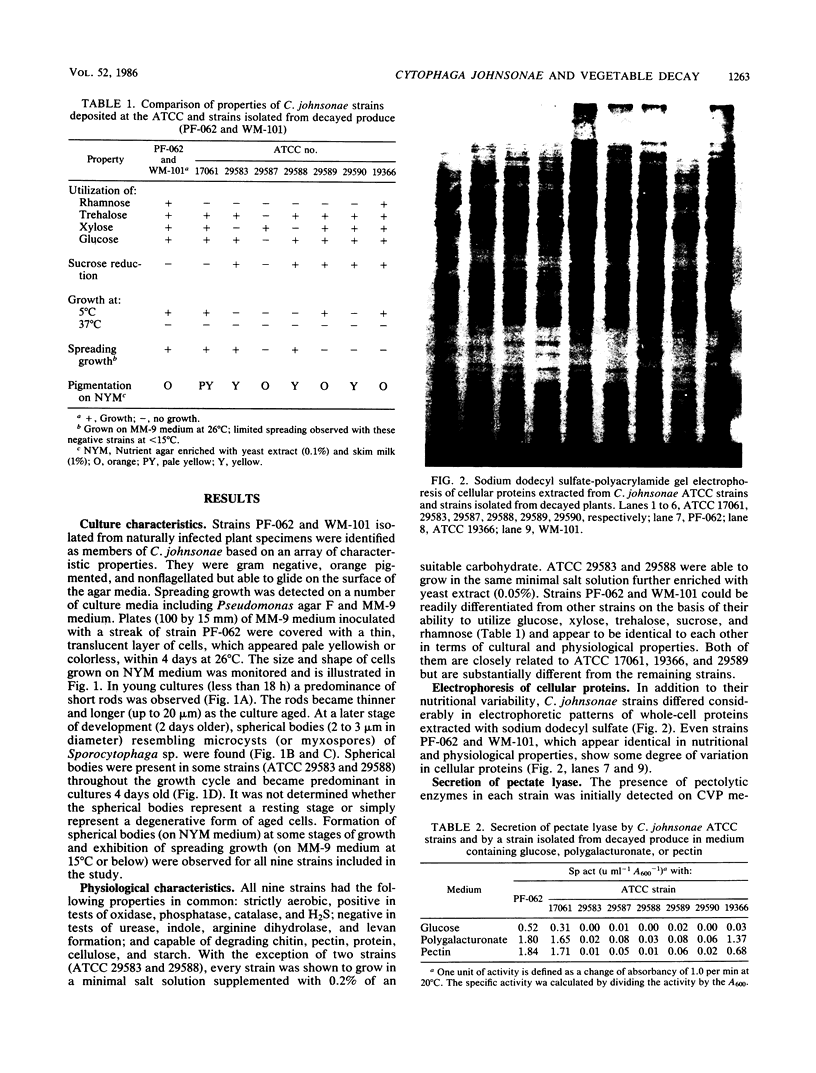
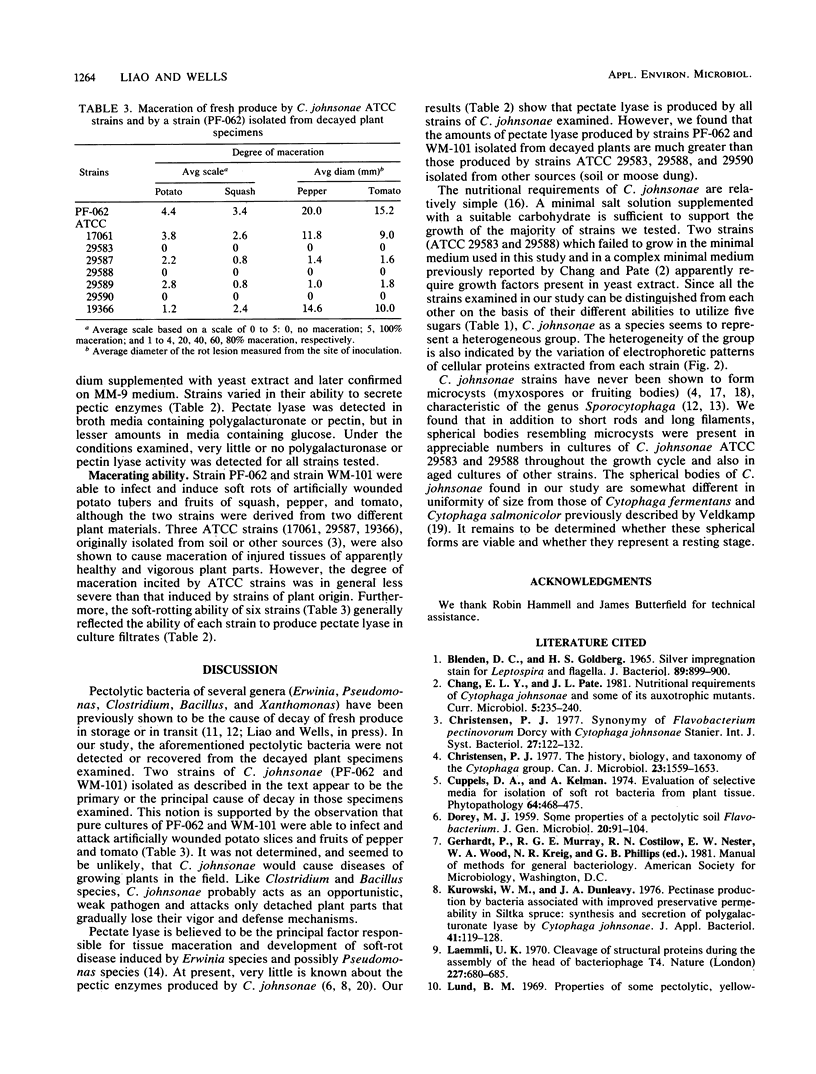
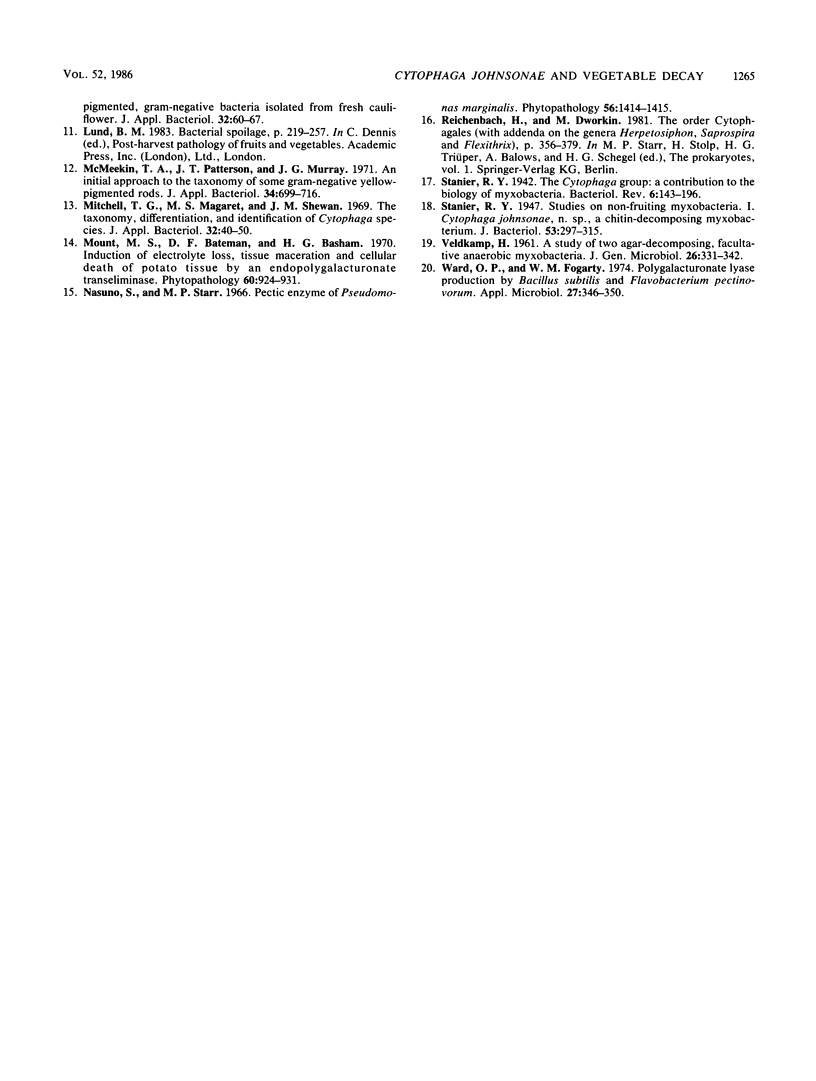
Images in this article
Selected References
These references are in PubMed. This may not be the complete list of references from this article.
- BLENDEN D. C., GOLDBERG H. S. SILVER IMPREGNATION STAIN FOR LEPTOSPIRA AND FLAGELLA. J Bacteriol. 1965 Mar;89:899–900. doi: 10.1128/jb.89.3.899-900.1965. [DOI] [PMC free article] [PubMed] [Google Scholar]
- Christensen P. J. The history, biology, and taxonomy of the Cytophaga group. Can J Microbiol. 1977 Dec;23(12):1599–1653. doi: 10.1139/m77-236. [DOI] [PubMed] [Google Scholar]
- DOREY M. J. Some properties of a pectolytic soil Flavobacterium. J Gen Microbiol. 1959 Feb;20(1):91–104. doi: 10.1099/00221287-20-1-91. [DOI] [PubMed] [Google Scholar]
- Laemmli U. K. Cleavage of structural proteins during the assembly of the head of bacteriophage T4. Nature. 1970 Aug 15;227(5259):680–685. doi: 10.1038/227680a0. [DOI] [PubMed] [Google Scholar]
- Lund B. M. Properties of some pectolytic, yellow pigmented, gram negative bacteria isolated from fresh cauliflowers. J Appl Bacteriol. 1969 Mar;32(1):60–67. doi: 10.1111/j.1365-2672.1969.tb02189.x. [DOI] [PubMed] [Google Scholar]
- McMeekin T. A., Patterson J. T., Murray J. G. An initial approach to the taxonomy of some gram negative yellow pigmented rods. J Appl Bacteriol. 1971 Dec;34(4):699–716. doi: 10.1111/j.1365-2672.1971.tb01007.x. [DOI] [PubMed] [Google Scholar]
- Mitchell T. G., Hendrie M. S., Shewan J. M. The taxonomy, differentiation and identification of Cytophaga species. J Appl Bacteriol. 1969 Mar;32(1):40–50. doi: 10.1111/j.1365-2672.1969.tb02187.x. [DOI] [PubMed] [Google Scholar]
- Nasuno S., Starr M. P. Pectic enzymes of pseudomonas marginalis. Phytopathology. 1966 Dec;56(12):1414–1415. [PubMed] [Google Scholar]
- Stanier R. Y. Studies on Nonfruiting Myxobacteria: I. Cytophaga johnsonae, n.sp., a Chitin-decomposing Myxobacterium. J Bacteriol. 1947 Mar;53(3):297–315. [PMC free article] [PubMed] [Google Scholar]
- Stanier R. Y. THE CYTOPHAGA GROUP: A CONTRIBUTION TO THE BIOLOGY OF MYXOBACTERIA. Bacteriol Rev. 1942 Sep;6(3):143–196. doi: 10.1128/br.6.3.143-196.1942. [DOI] [PMC free article] [PubMed] [Google Scholar]
- VELDKAMP H. A study of two marine agar-decomposing, facultatively anaerobic myxobacteria. J Gen Microbiol. 1961 Oct;26:331–342. doi: 10.1099/00221287-26-2-331. [DOI] [PubMed] [Google Scholar]
- Ward O. P., Fogarty W. M. Polygalacturonate lyase production by Bacillus subtilis and Flavobacterium pectinovorum. Appl Microbiol. 1974 Feb;27(2):346–350. doi: 10.1128/am.27.2.346-350.1974. [DOI] [PMC free article] [PubMed] [Google Scholar]




